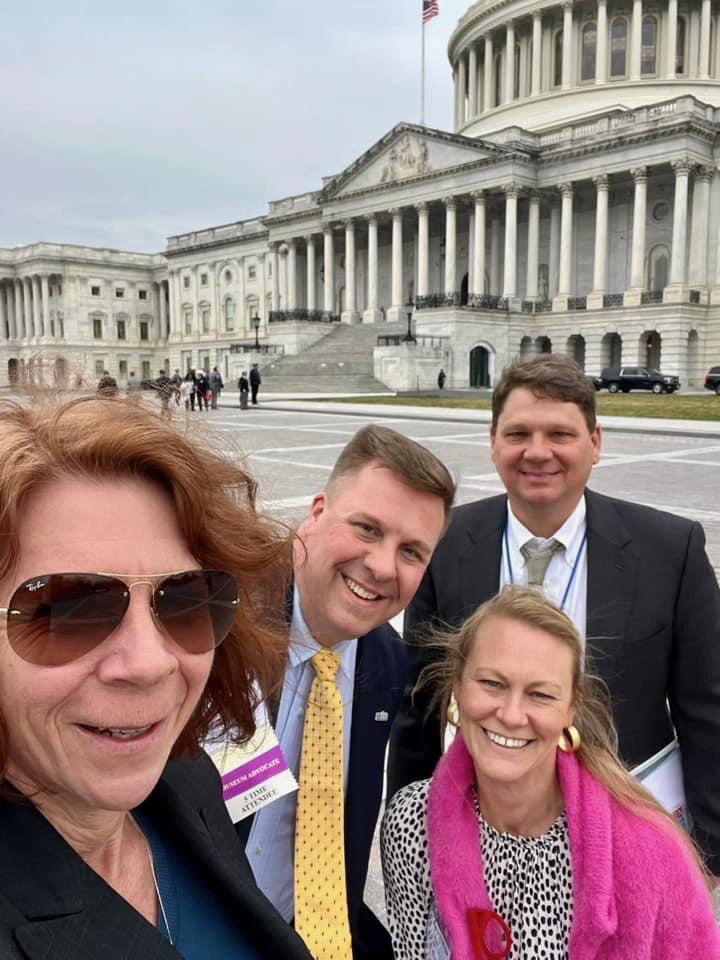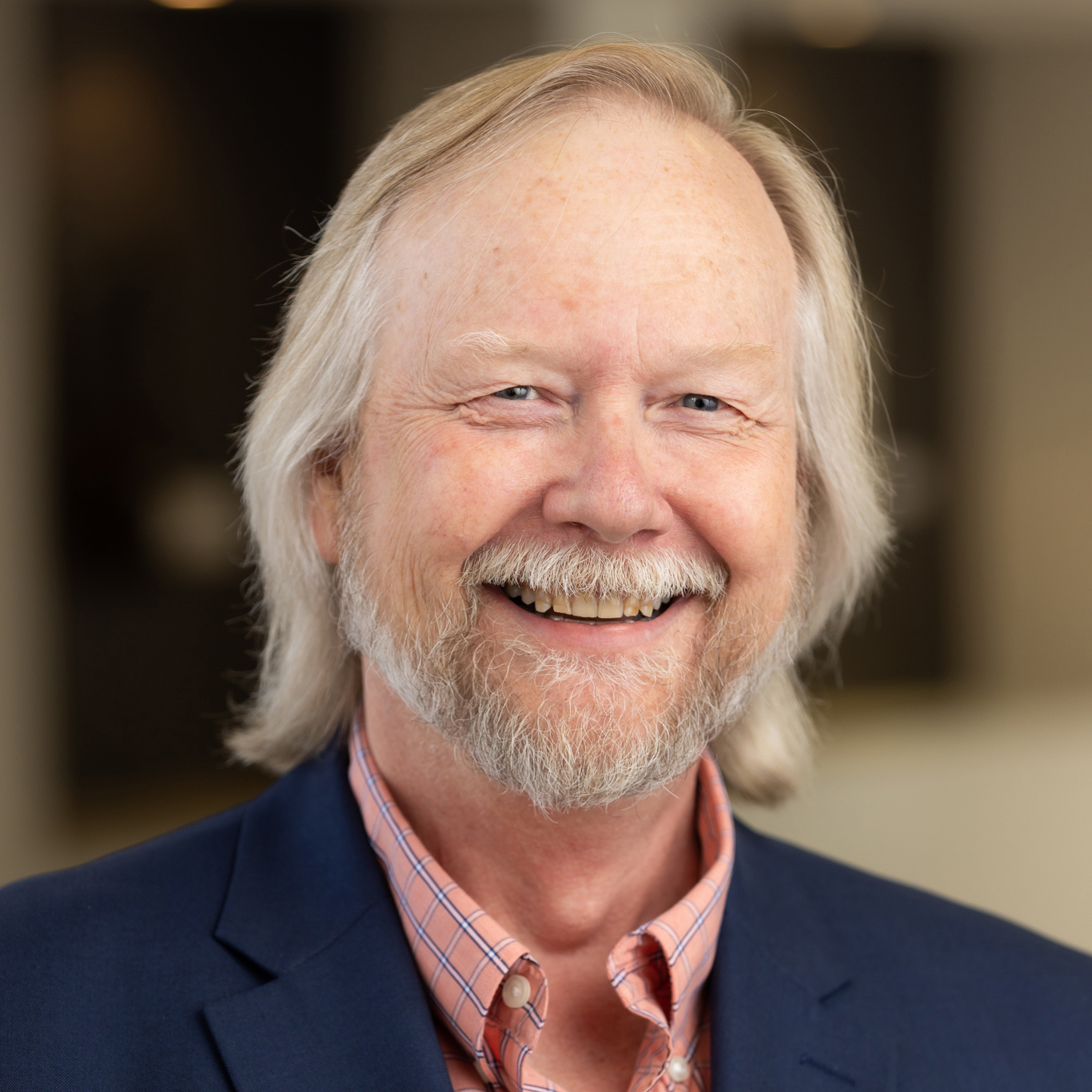The AMA’s Chloe Hinton Joins in the American Alliance of Museums’ Annual Advocacy Day
Albany Museum of Art Director of Development Chloe Hinton has never been shy about expressing her love of museums and her unwavering belief that they are vital to the communities they serve. On Feb 26-27, she had the opportunity to take that message to Capitol Hill on Museums Advocacy Day.
“Museums are an important thread that in so many ways hold together the vast cultural tapestry of America and the world,” Hinton said. “I was proud to travel to our nation’s capital to advocate for the Albany Museum of Art and the thousands of U.S. museums and institutions vital to telling our history, examining our present, and looking into our future.”
Begun 15 years ago, the annual event by the American Alliance of Museums is an opportunity for museum advocates from across the United States to join together to speak up for museums with federal lawmakers, their staff, and federal policymakers. The AMA, accredited by the AAM since 1993, is the only accredited institution within an 80-mile radius of Albany.
Among American institutions, museums have widespread public confidence and support. A 2017 survey of 2,000 people across the nation conducted by the AAM and the Ipsos opinion polling agency found that 97% of respondents believe museums are educational assets to their communities, 89% believe museums contribute critical economic benefits, 96% want federal funding for museums maintained or increased, and 96% would approve of elected officials who support museums through legislation.
“Among the most trusted public institutions, museums remain environments where all involved can enjoy a vast sense of freedom, inspiration, creativity, and learning,” AMA Executive Director Andrew J. Wulf, Ph.D., said. “The Albany Museum of Art celebrates art from around the world while highlighting the art and artists of the South. Chloe’s advocacy for the Albany Museum of Art is exemplary as she is a champion spokesperson for the relevance of museums everywhere, specifically the AMA, the art and cultural anchor of South Georgia.”
During her visit to Capitol Hill, Hinton met with staff of lawmakers from Georgia—U.S. Sens. Raphael Warnock, D-Ga., and Jon Ossoff, D-Ga., and U.S. Reps. Sanford Bishop, D-2nd District, and Mike Collins, R-10th District.
“We urged federal legislators to take action that directly affects our museum in Albany and other museums across the nation,” Hinton said. “We asked the lawmakers to continue supporting the Office of Museum Services, to remove the ban on earmarks that prevents museums from receiving community development funds, and to support the reinstatement of the Universal Charitable Deduction.”
Regarding the Office of Museum Services (OMS) within the Institute for Museum and Library Services (IMLS), museum advocates urged lawmakers to maintain funding at $55.5 million in FY 2024 and to increase it to $65.5 million in FY 2025. In FY 2023, Congress provided IMLS $295 million, with $55.5 million directed to OMS. That allowed OMS to provide 317 museums and related organizations in 49 states, the District of Columbia, and Puerto Rico with $53 million in funding that fiscal year.
Advocates also are asking federal legislators to provide the National Endowment for the Arts, which distributes about 40% of its grant funds to state arts agencies, including the Georgia Council for the Arts, with at least $207 million in funding in FY 2024 (flat with its FY 2023 allocation) and robust funding for FY 2025.
Because of the sharp increase in the standard deduction that individuals and married couples receive in the Tax Cuts and Jobs Act of 2017, the percentage of taxpayers who itemize deductions—and can claim deductions for charitable contributions—dropped from 30% to 9%. The Universal Charitable Deduction, which allowed a tax deduction of $300 per taxpayer for charitable giving, was included in the CARES Act of 2020 and was extended for 2021 but expired at the end of 2021, according to the Nonprofit Alliance.
On Feb 28, 2023, Sens. James Lankford, R-Okla., and Chris Coons, D-Del., introduced the Universal Giving and Pandemic Response and Recovery Act (The Charitable Act), which would reinstate the Universal Charitable Deduction for all taxpayers at the $300 per taxpayer level. Sen. Warnock, a co-sponsor of the bill, is now in the Senate’s Committee on Finance. According to the Nonprofit Alliance, the organization’s goal is to make the Universal Charitable Deduction permanent in tax law and increase the allowed amount of the deduction.
The advocacy day was an opportunity to spotlight museums’ essential role in local, state, and national economies. Nationally, museums contribute $50 billion to the U.S. economy and support more than 726,000 American jobs, according to data cited by the AAM. Each job created by museums results in about $16,500 in additional tax revenue, with the museum sector generating $12 billion a year in tax revenue overall. For every $1 museums and non-profits receive in government funding, more than $5 in tax revenue is returned.
In tourism, 76% of U.S. leisure travelers participate in cultural or heritage activities such as visiting museums. These travelers spend 60% more money on average than other leisure travelers. As a result, every direct job at a museum supports one additional job in the economy, a higher rate than many industries.
In Georgia, according to a report by Americans for the Arts that examined the economic and social impact that nonprofit arts and culture organizations and their audiences had in FY 2022, the direct economic activity totaled more than $1.27 billion. The total economic impact in Georgia was $846 million in personal income paid to residents, as well as $27.3 million in city and county taxes, $22.08 million in state tax revenue, and $150.8 million in federal tax revenues. Arts and culture organizations employed 10,103 people and generated 9,631 jobs for their audiences.
The report stated that in FY 2022, event-related spending by arts and culture audiences was $706.2 million, with 14.68 million Georgia residents attending those events and just under 1.9 million visitors from out of state attending them. Audiences at those events spent an average of $37.68 per event. In-state residents spent an average of $32.70 per person per event, while those from out-of-state more than doubled that average by spending $76.43.
In measuring the social impact, individuals who participated in surveys at arts and culture events in Georgia in FY 2022 said the venue or facility they visited was essential to them (85.7%), that they would feel a great sense of loss if the activity or facility was no longer available (87.9%), that the activity or facility inspired a sense of pride in the neighborhood or community (90.6%). Participation in the activity or visitation to the facility was the attendees’ way of ensuring that it would be preserved for future generations (88.9%).
Museums also are signs of a high quality of life in a community. News organizations take museums into account when forming their lists of better locations. In determining America’s best cities, Bloomberg places the most significant weight on Leisure amenities, including the density of museums in a city. In its annual Best Places to Live survey, Money incorporates the concentration of accredited museums in its ranking formulas.
“While it’s hard to visualize given the images we see of sporting events on television and streaming services, visitation to art museums, science centers, historic houses and sites, zoos, and aquariums is higher than the attendance for professional sporting events,” Hinton said. “We at the AMA are particularly proud that we are among the 37% of U.S. museums that offer free admission. More than that, support from our donors and fundraising activities enables us to offer free field trips to schools and organizations.”
The legislative agenda for Museums Advocacy Day also included support of civic and history education in secondary schools, improving the affordability and accessibility of higher education to all students, funding for STEM (science, technology, engineering, and math) education, reauthorization of the Historic Preservation Fund, increased funding for the energy efficiency pilot program for nonprofits, measures that would protect cultural property around the world, an amendment to the Anti-Deficiency Act that would allow for the continuity of operations and access to public lands and federally operated museums during federal government shutdowns, and efforts to protect native wildlife, including declining pollinator populations.
AMA EXHIBITIONS
- Gold Soundz, works by Rob Matre is Feb 1-April 20, in the Haley Gallery.
- Andy Warhol: Hand-Colored Flowers is Feb 1-April 20, in the East Gallery.
- Educators as Artists, 5th juried exhibition, is Feb 1-April 20 in the McCormack Gallery.
- Old Master Drawings from the Shaffer Collection is Feb 1, 2024-Jan 25, 2025 in the Hodges Gallery.
- Escape Plan, an installation by Elinor Saragoussi, is in the West Gallery.
ABOUT THE ALBANY MUSEUM OF ART
The Albany Museum of Art is located at 311 Meadowlark Drive in Albany, Ga., adjacent to Albany State University West Campus just off Gillionville Road. The museum is accredited by the American Alliance of Museums. The Albany Museum of Art is open to the public 10 am-5 pm Tuesdays through Saturdays. Admission is free.
For more information about the AMA please visit our website, or call 229.439.8400. Be sure to follow the Albany Museum of Art on Facebook and Instagram.


